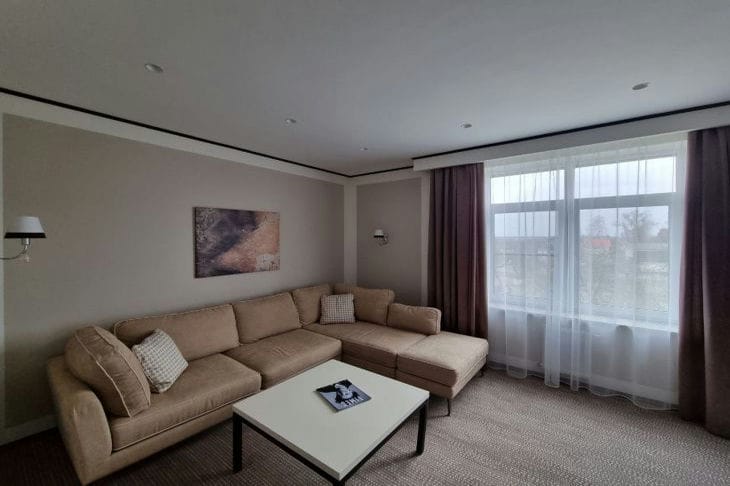How to Choose the Best Color Scheme for a Small Living Room: Designer Tips
Before choosing a color scheme for a small living room, you need to understand the basics of color design.
One of the key tools in this area is the color wheel.
In this circle, colors are arranged in the order and combinations in which they are perceived by the human eye. On an emotional level, each color affects the mood and associations it evokes in people, says Yulia Tychino .
For the living room, you can choose any combination of colors that will match its functionality, style and your preferences. In order not to take risks, the ideal choice would be to use the so-called "classic" colors: white, black, gray and pastel shades.
However, if you want to choose a brighter palette, it is recommended to further study the psychology of color and their combinations.

Color trends in interior design
Color trends in the interior change every year, and for a small living room it also makes sense to pay attention to current color combinations. For 2021, designers recommend giving preference to neutral tones: pastel pink, beige, light gray, olive and ocher.
In fact, by choosing such neutral tones and combinations, you can be sure that the interior will not only be harmonious and balanced, but also ready for future changes and additions.
Also, if you want a brighter living room, we can recommend dark, graphic shades: dark blue, terracotta, dark green, as well as yellow and red in combination with black or gray.
Using different shades and textures
If you want to move away from neutrality and make the interior brighter and more dynamic, you can play with different shades of the same color. For example, you can use blue in combination with light blue, dark blue and gray.
But remember that using too many shades can lead to clutter and visual congestion. To avoid this, you can use textures: rough and soft, glossy and matte, which will help separate planes and make the style more interesting.
It is also important to remember about color compatibility. Cool and warm tones do not always want to be combined with each other, and where possible, you need to make sure that the colors are combined without drying out.
Creating effects with color
Color can also be used to create different effects in the interior.
For example, only white walls make a room seem spacious, light and airy, but with additional bright colors and textures, the walls capture all the attention and create an effect of dynamism and drama.
A narrow space can be expanded with horizontal stripes, light colors and reflective surfaces.
A small room can be made more spacious by using light flowers and mirrors, and by placing surfaces on the floor that reflect light, you can achieve additional lighting.
A colorful palette can be used to visually emphasize the charm of the simplest details.
Where to find inspiration for color schemes
If choosing a color for a small living room is difficult, you can find inspiration from a variety of sources.
Look at professional design projects and interior samples. What do these projects have in common and what can you borrow for your home?
It is also useful to look at various interior design magazines; you can find inspiration in films and books that tell about the history of design and the ideological chapters of this area.
In clubs and groups on social networks dedicated to decorative finishing, you can find many interesting ideas and exchange impressions with stylish people.
But most importantly, you need to focus on your taste, your individuality and harmony with the surrounding space.
